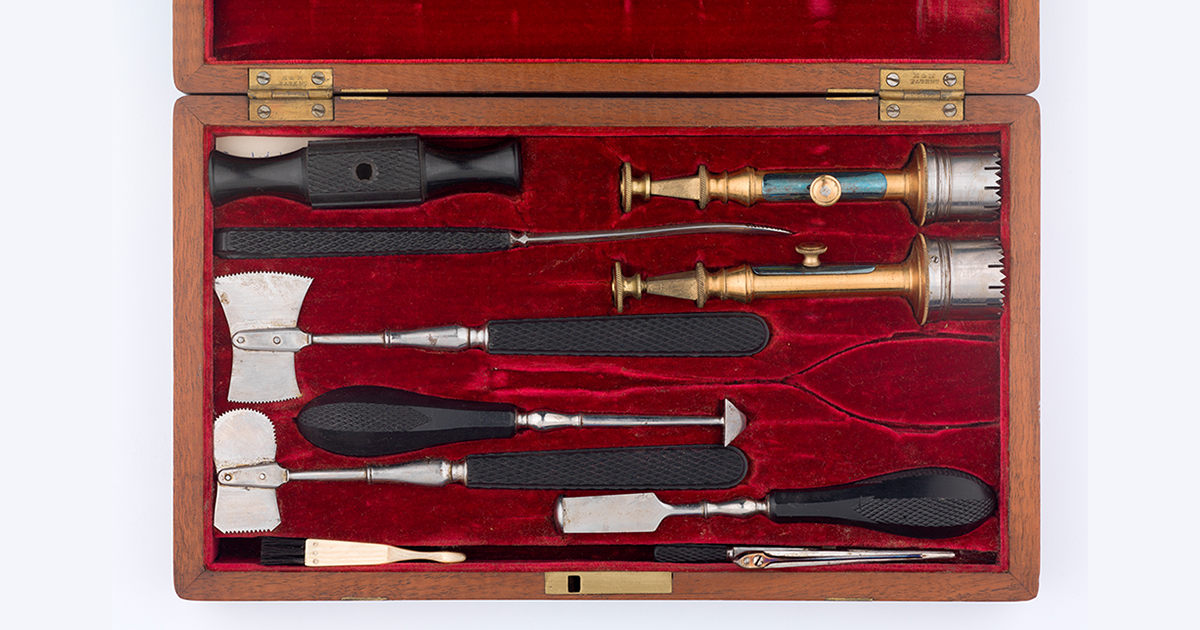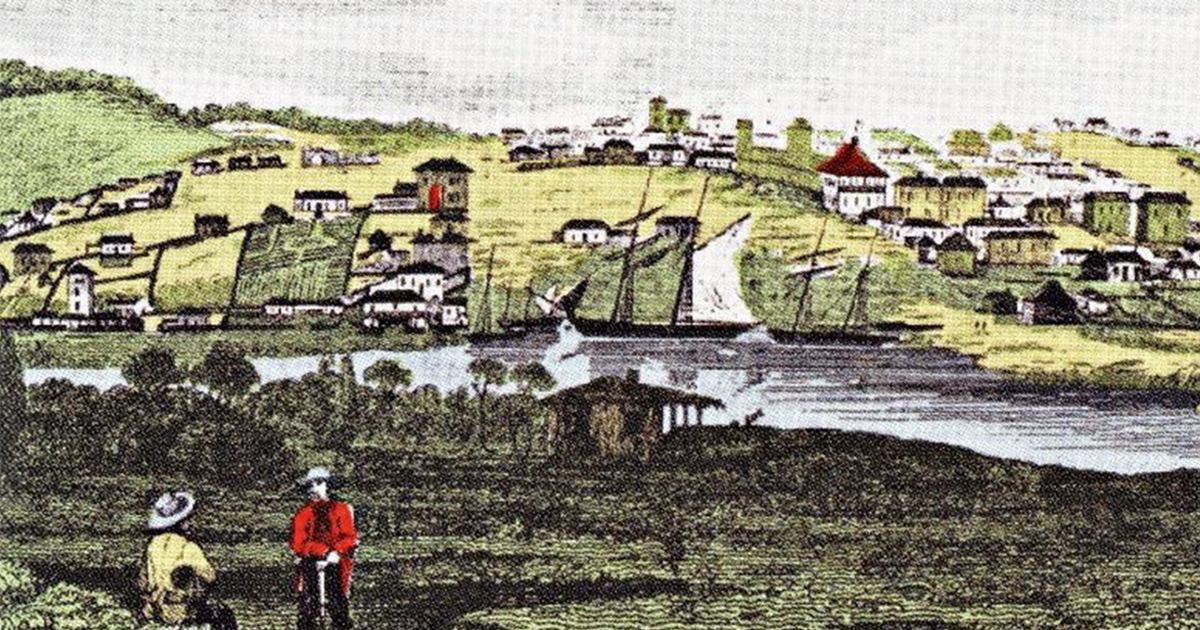The history of AMA Victoria
1846-1851 Port Phillip Medical Association
1852-1855 Victoria Medical Association < > 1854-1855 Medico-Chirurgical Society of Victoria
1855-1907 Medical Society of Victoria < > 1879-1907 British Medical Association (Victorian Branch)
1907-1962 British Medical Association (Victorian Branch) and the Medical Society of Victoria
1962-present Australian Medical Association (Victorian Branch) and the Medical Society of Victoria, with a change of name to AMA Victoria Ltd (AMAV) in 1997
Archival collections
The archival collections of AMA Victoria go back to the 1846 beginnings of the Port Phillip Medical Association. The early records are primarily in the form of handwritten Minute Books. Much work has been done by the Heritage Committee to report what is contained in these early archives. Work is ongoing to report more recent important historical material.
In the mid-1990s much of the early archival material was placed in the Medical History Library of the University of Melbourne. Researchers can read a microfiche index and view microfilm of the archived material in the Baillieu Library of the University and obtain photocopies if required. Alternatively, through the Medical Museum website.
More recent and ongoing records of AMA work are held at the AMAV Head Office. Records after 2015 are in digital form. The Heritage Committee is engaged in detailed indexing of the contents that are held in sets of archival boxes covering: AMA National; AMAV Services; AMA Operations and Training; AMAV and Medical Society of Victoria; Reference Library.
Researchers wishing to view archival material can apply to the Heritage Committee.
The work also includes identification of issues of sociological significance, such as managed care, medical indemnity, impaired practitioners, overseas medical graduates and many others. Some examples can be seen in Historical highlights (below).
Historical highlights

Tools of the Trade: exploring the AMA Collection
Tools of Trade, a fascinating exhibition of medical artefacts from the mid-late nineteenth century was on display to members at AMA Victoria House in Parkville. The exhibition opened on 8 November 2022 and ran until March 2023.
Past presidents

Medical Society of Victoria
1852. D.E. WILKIE
1853. D.E. WILKIE
1854. R. EADES
1855. W. M. TURNBULL
1856. A. COLLINGS
1857. J.B MOTHERWELL
1858. D.E WILKIE
1859. E. BARKER
1860. R.T. TRACY
1861. F.T.W. FORD
1862. J. BLACK
1863. W. GILLBEE
1864. D.J. THOMAS
1865. L.J. MARTIN
1866. W.H. CUTTS
1867. T.M. GIRDLESTONE
1868. J.E. NEILD
1869. S.D. BIRD
1870. H. JONASSON
1871. G.B. HALFORD
1872. J. BLAIR
1873. G.H. FETHERSTON
1874. P.H.MAC. GILLIVRAY
1875. T.A. BOWEN
1876. J. DAY
1877. T. L. MCMILLAN
1878. G. GRAHAM
1879. T. N. FITZGERALD
1880. A. S. GRAY
1881. J. ROBERTSON
1882. T. HEWLETT
1883. E.M. JAMES
1884. W. HAIG
1885. P. MOLONEY
1886. J. JAMIESON
1887. J. WILLIAMS
1888. J.P. RYAN
1889. W. BALLS-HEADLEY
1890. J. JACKSON
1891. E. HINCHCLIFF
1892. H.B. ALLEN
1893. C.S. RYAN
1894. D.A. GRESSWELL
1895. G.R.W. ADAM
1896. F.D. BIRD
1897. J.T. BRETT
1898. R.B. DUNCAN
1899. T.N. FITZGERALD
1900. J.W. BARRETT
1901. C.J. MARTIN
1902. J.P. RYAN
1903. R.H. RUSSELL
1904. G.T. HOWARD
1905. A.J. WOOD
1906. M.U. O'SULLIVAN
British Medical Association (Victorian Branch)
1879. W. GILLBEE
1880. W.H. CUTTS
1881. W.H. CUTTS
1882. J.E. NEILD
1883. G. GRAHAM
1884. J.T. RUDALL
1885. L. HENRY
1886. J. E. WILLMOTT
1887. J.E. WILLMOTT
1888. T. ROWAN
1889. J.W.Y. FISHBOURNE
1890. G. LE FEVRE
1891. A. SHIELDS
1892. J.W. SPRINGTHORPE
1893. D.A. GRESSWELL
1894. F. MEYER
1895. W. SNOWBALL
1896. M.U. O'SULLIVAN
1897. R.A. STIRLING
1898. R.L. MCADAM
1899. A.L. KENNY
1900. G.A. SYME
1901. J.E. NEILD
1902. W. MACANSH
1903. D.A. GRESSWELL
1904. R.E. WEIGALL
1905. H.W. BRYANT
1906. G.W. CUSCADEN
British Medical Association (Victorian Branch)
Medical Society of Victoria
1907. H.B. ALLEN
1908. G.A. SYME
1909. G.W. CUSCADEN
1910. R.R. STAWELL
1911. R.H. FETHERSTON
1912. J.F. WILKINSON
1913. W.R. BOYD
1914. A.L. KENNY
1915. A. HONMAN
1916. A.V.M. ANDERSON
1917. R.J.A. BERRY
1918. R.J.A. BERRY
1919. J.R. WEBB
1920. G.A. SYME
1921. B. KILVINGTON
1922. J. GORDON
1923. L.S. LATHAM
1924. J.W.D. HOOPER
1925. S.S. ARGYLE
1926. H.D. STEPHENS
1927. R.J. BULL
1928. J.N. MORRIS
1929. B.T. ZWAR
1930. R.G. MCPHEE

British Medical Association (Victorian Branch)
Medical Society of Victoria
1931. T.E.V. HURLEY
1932. B.M. SUTHERLAND
1933. W.G.D. UPJOHN
1934. GERALD WEIGALL
1935. R.M. DOWNES
1937. R.M. ALLAN
1938. J.P. MAJOR
1939. F.L. DAVIES
1940. H.C. COLVILLE
1941. A.E. COATES
1942. H. BOYD GRAHAM
1943. JOHN A. CAHILL
1944. DAVID ROSEBY
1945. JOHN DALE
1946. PETER MACCALLUM
1947. A.E. COATES
1948. F. KINGSLEY NORRIS
1949. DOUGLAS J. THOMAS
1950. ROBERT SOUTHBY
1951. ROY F. WATSON
1952. CHARLES BYRNE
1953. LEONARD BALL
1954. G. RALEIGH WEIGALL
1955. H.G. FURNELL
1956. GEORGE SWINBURNE
1957. ALAN MCCUTCHEON
1958. KEITH HALLAM
1959. J. GAVIN JOHNSON
1960. H.G. JUDKINS
1961. G. NEWMAN-MORRIS
Australian Medical Association (Victorian Branch)
Medical Society of Victoria
1962. STANLEY WILLIAMS
1963. MERVYN ROBINSON
1964. MEDWYN HUTSON
1965. ALEX SINCLAIR
1966. DOUGLAS DONALD
1967. ROBERT S. LAWSON
1968. MAURICE V. CLARKE
1969. VERNON D. PLEUCKHAHN
1970. FRANK I BISHOP
1971. HARRY W. GARLICK
1972. J.V. CHAMPION DE CRESPIGNY
1973. IAN L. MCVEY
1974. CHARLES M. ROSEBY
1975. MURRAY MAXWELL
1976. JOYCE M. DAWS
1977. ROSS WEBSTER
1978. JAMES BEST
1979. JAMES BREHENY
1980. BRYCE PHILLIPS
1981. JOHN F. MACDONALD
1982. AUBREY PITT
1983. GEORGE SANTORO
1984. CLYDE SCAIFE
1985-6. PAUL NISSELLE
1986-7. JOHN MATHEW
1987-8 KEN SLEEMAN
1988-9. BILL MCCUBBERY
1989-90. M.A. MCKENZIE
1990-91. R.J. WHITING
1991-92. PAUL HEMMING
1992-93. STEPHEN CLARKE
1993-95. PETER J. BEAUMONT
1995-97. SANDRA HACKER
1997-99. GERALD R. SEGAL
1999-01. MICHAEL G. SEDGLEY
2001-03. MUKESH HAIKERWAL
2003.06. SAMUEL J.B. LEES
2005-07. MARK W. YATES
2007-09. DOUGLAS G. TRAVIS
2009-12. HARRY HEMLEY
2012-14. STEPHEN J. PARNIS
2014-16. ANTHONY BARTONE
2016-18. LORRAINE BAKER
2018-21. JULIAN L. RAIT OAM
2021-23. RODERICK J. MCRAE
2023-25: JILLIAN TOMLINSON
2025-CURRENT: SIMON JUDKINS
About the Heritage and Archives Committee
AMA Victoria holds an extensive archives collection, dating back to its earliest years. These include records created by officers and staff of AMA Victoria, and records received from members, government officers, other organisations and members of the public.
In 2009 the AMA Victoria Heritage and Archives Committee was established to oversee the Archives Management Program and associated projects. The Committee is run entirely by volunteer members and is working on digitising and preserving these valuable archival assets for research purposes.
Are you interested in joining the Committee?

